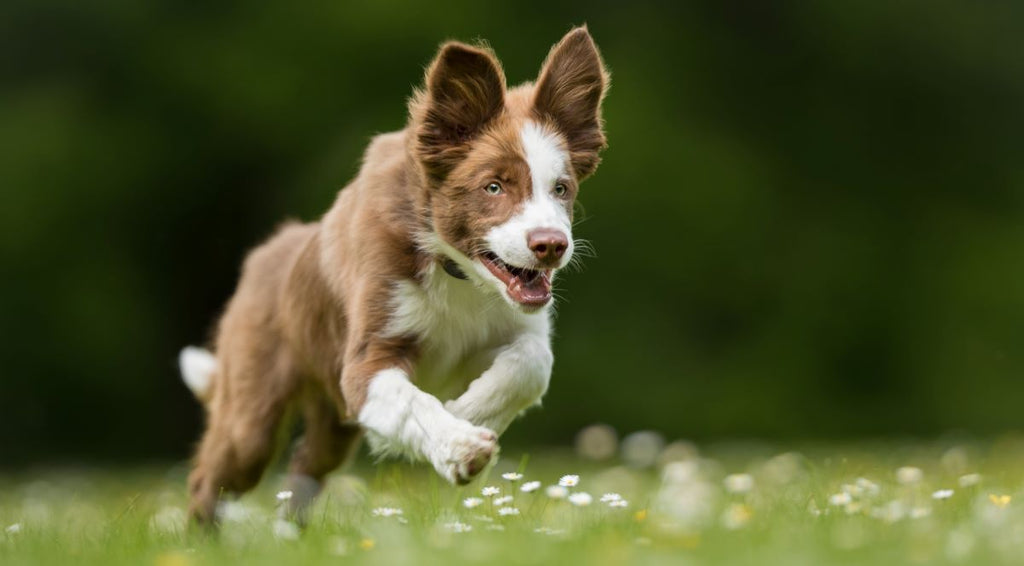
Canine hay fever and what you can do about it
Your itchy dog may be trying to tell you something unexpected. In this dog hay fever guide, you can learn the signs of canine hay fever, then check out our 5-step plan to help your scratching dog beat the allergic itch.

There's no need to limit outdoorsy fun - instead, follow our guide to avoid the itch.
Long summer days spell picnics in the pack, sandwiches ripe for the stealing, and epic games of fetch. Though the possibilities for snack theft may go up with the temperature, summer isn’t necessarily great news for all dogs. That’s because many suffer from hay fever – just like us humans.
Signs of dog hayfever
Is your dog exhibiting any of the following traits?
- Itchy skin - Scratching or biting their body
- Licking, nibbling, or biting at their paws
- Rubbing their face on the furniture or the floor or asking for face scratches
If your dog has any of these symptoms, it’s likely that they suffer from a pollen allergy – essentially, doggy hay fever.
So how does hay fever affect dogs in the UK, and how can we help dogs who’re suffering?
Canine hay fever explained
Developing hay fever and pollen allergies in dogs start in the same way human hay fever does – ingestion of the tiny pollen granules released by plants. The difference is how our bodies respond.
Us dog owners and humans, tend to get a runny nose, watery eyes and start sneezing – and if you suffer (or know a sufferer) you know just how miserable a bad reaction can be. But your furry friend endures an arguably worse fate: all-over-itches.
This is because when a dog has an allergic reaction, the histamines released by the body in response to pollen are released in the skin. This is what can make seasonal allergies so hard to spot, and uncomfortable to endure.
Hay fever – not just a summertime affliction
Much like in humans, symptoms of canine hay fever begin in April and can last until late summer. However, it's not just inhaled pollen that can trigger hay fever in dogs. Pollen coming into contact with your dog’s skin can also trigger the histamine response – so frolicking in a grass pollen meadow this spring and summer, with high pollen counts, could leave your pet with a persistent itch.

Look forward to long summer days outside with your pup - without worrying about hay fever.
As well as grass, our canine friends are sensitive to tree pollen – so start keeping an eye out for itching and scratching as soon as spring has sprung.
How to treat dog hay fever
Luckily, if you think your dog may be prone to hay fever, there’s a lot you can do to help. Here is our 5-step guide to beat the seasonal itch:
- Fight the fleas – Flea allergies can really exacerbate skin problems and should be treated promptly. As well as avoiding infestation in your home, you must treat fleas immediately to avoid more serious skin problems.
- Brush daily – As well as a good brush down every day, remember to carefully comb or cut out matted hair. Any lumps or clumps can hold dirt and debris, which is uncomfortable for your pet – and can cause bacterial dermatitis.
- After-walkies wipe down – Wipe your dog down with a damp towel after they’ve been out in the grass – this helps to remove pollen trapped in your dog's coat. Another way to help is going for a walk early in the morning.
- Pamper and bathe – Bathe with a shampoo designed to sooth irritated skin. But remember not to bathe too frequently – you don’t want dry eye or to dry out your dog’s skin.
- Boost their natural defences and immune system – One of the simplest ways to guard against the irritating symptoms of hay fever and other dog skin conditions is to ensure that your pet’s natural skin defences are in tip-top condition with a supplement like YuDERM Itchy Dog.

Summer is our favourite season for outside play. Prevent hay fever to maximise your quality time outdoors.
Omega oils boost the skin barrier
The Omega 3 & 6 oils contained in YuDERM Itchy Dog aid the skin health of your dog by increasing essential fatty acids that can be lacking in their diet. These fatty acids help to replenish your dog's skin barrier and by doing so, reduce the likelihood of allergens entering their system. We recommend YuDERM Itchy Dog as a preventative measure this hay fever season, so you and your furry friend can enjoy time outdoors without having to check the pollen count!
What activities do you are your furry friend most enjoy outdoors in the summertime? Are these ever affected by skin allergies? Comment below to share your experience and join our pet-loving community over on our Facebook page.





